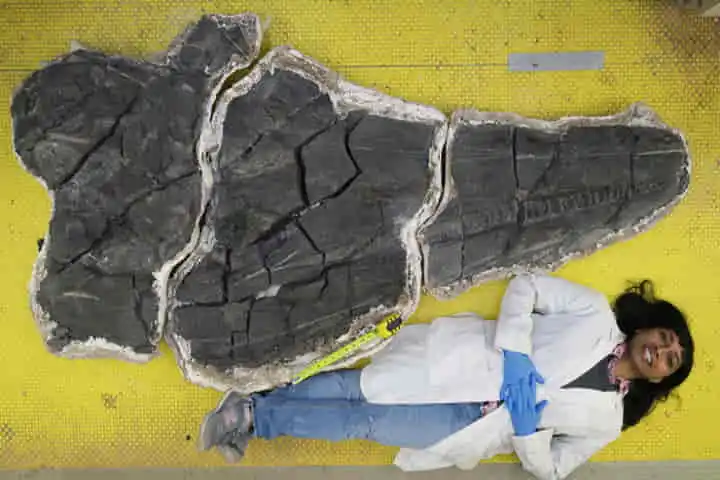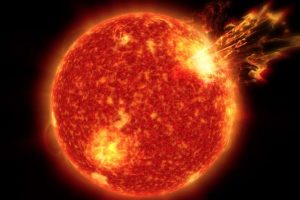When the landmass on the earth was ruled by the mighty dinosaurs, the water sphere had its own giant reptiles, dominating the waves and they were known as ichthyosaurs. As per an article in Independent these giants could grow to be 50 feet long — to the size of present day sperm whales.
According to a report in smithsonianmag.com, talking about these giants, Martin Sander, the author of the study which researched them, in a Press release said: "From the first skeleton discoveries in southern England and Germany over 250 years ago, these 'fish-saurians' were among the first large fossil reptiles known to science, long before the dinosaurs, and they have captured the popular imagination ever since.”
Sander is a University of Bonn palaeontologist, who is also a researcher at the Natural History Museum of Los Angeles County (NHM).
It was more than 10 years ago, that is in 2011 to be precise, that an eight-foot-long skull of ichthyosaurus was found in the mountains of Nevada. The animal’s attributes included a long snout that was like that of a dolphin and teeth which were conical. Along with the skull part of the spine, shoulder and fin of the creature were also found.
This creature whose fossil was found was a new species called Cymbospondylus youngorum and it is thought to have been present 246 million years ago on the earth, thus making it the largest ever fossil found belonging to that era.
The findings about this specimen shared by the researchers in the journal Science throws light on what the oceans, millions of years ago, must have been and how these marine giant ichthyosaurs became so large.
While the whales and the ichthyosaurs did not share space on the planet at the same time, they shared more than just body shape and size which were alike. The two had developed from creatures which were based on land while their colossal physical form during their time made them the largest creatures of the marine world.
Also read: Stronger and bigger jaws helped dinosaurs dominate the earth for 150 million years
Talking about the ichthyosaurs and whales, Sabrina Imbler of New York Times points out one interesting aspect which is that on the evolutionary timeline, the former grew to a huge size very rapidly. From the time their ancestors made their move from the land to the sea, the ichthyosaurs took three million years to become giants while as compared to them, it took 45 million years for the whales to achieve their mammoth size.
The researchers, intrigued as they were as to how the ichthyosaurs became so huge, tried to visualise what the food chain must have been at that time. The Permian extinction about 252 million years ago, had eliminated nearly 96 per cent of species in the oceans. Yet this extermination left space for creatures like ammonites, which is a type of mollusks and also conodonts who were eel-like, to thrive and prosper, as per the release.
The whales of present day like blue whales and humpbacks are able to achieve their huge size by filter feeding on plankton which are tiny organisms but this sort of a food chain was not there for the ichthyosaurs. In that era, there were no planktons but there were ammonites and these formed the food chain’s base. While the reptiles did not eat and prey on the shellfish but they made good by surviving on those creatures and species that ate them like the squid and fish, states a report in the Times.
Also read: Flying Dinosaurs with a 40 feet wingspan once dominated the skies
While the researchers are not able to offer a complete explanation as how ichthyosaurs became so big and that too in such a quick time, one possible cause may be the explosion in the population of conodonts and ammonites who filled the vacant space in the food web and this was conducive for the reptiles to use and attain the great size.
Quoting the curator at the NHM, Velez-Juarbe, the media release stated: "As researchers, we often talk about similarities between ichthyosaurs and [whales and dolphins], but rarely dive into the details. That’s one way this study stands out, as it allowed us to explore and gain some additional insight into body size evolution within these groups."




















